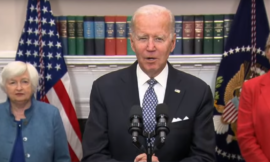In this episode, we shout out listeners who left a review on Apple Podcasts and we answer listener questions that were submitted via email by Pat, Angela, Joe, Brian, Josh, and Al.
Thanks again to everyone who left a review or who submitted a listener question! If you have a question about your minerals or royalties, you can send it to feedback@mineralrightspodcast.com and who knows we might just answer it on the air!
If this has been helpful, please take a moment and leave us an honest rating & review on Apple Podcasts. This feedback really helps keep us going and helps make sure that we are putting out content that is tailored to your needs.
Shout Outs!
Thanks to everyone who left a review on Apple Podcasts. Here are a couple of the latest reviews and emails that we’d like to shout out:
Listener Questions
Our First Question is from Pat:
My husband started with 10.5%, Brother died got 6.2% from that, Mother dies got 8.4% from her.
Called BP they checked archives and emailed a percent of for each well. (11/01/2008)shows each addition from deaths.
Checking statements from 2011 – % listed on his is original %.
What can I do?
Pat
Hi Pat,
Thanks for your email. I would call BP’s owner relations department and ask what documentation they need in order to transfer the brother/mother’s interest to you as well. You may need to go through ancillary probate to get it all squared away but an attorney in the state where the minerals are located should help if that is the case.
First step though is to contact the operator to find out what they need.
Good luck and let me know how it goes.
Question #2
I just watched your video on NRA and I was wondering if you could help me with the following.. If I own 10 NMA and I want to calculate the NRA, is this the formula to calculate:
NMA multiplied by the Royalty rate multiplied by 8?
So.. 10 X .1875 X 8 = NRA or 15??
I really appreciate you providing the podcast and your help in advance to my question.
Kind Regards,
Angela
Hi Angela,
Thanks for your email! That is correct. This is because you are effectively dividing your lease royalty rate by a 1/8th royalty which ends up as 1/1/8 = 8. So with 10 NMA leased at 18.75% royalty is 15 Net Royalty Acres.
If the term NRA is new, Angela is referring to how to calculate the number of Net Royalty Acres that she owns. There is a very simple formula that I just mentioned that allows you to do this. All you need to know is the number of Net Mineral Acres that you own and your lease royalty rate. To help you figure this out I created a free worksheet where you can plug in your information and it will tell you how many Net Royalty Acres you have. To find out more about this topic, check out What is the Difference Between a Net Mineral Acre (NMA) and a Net Royalty Acre(NRA)?. To calculate how many Net Royalty Acres you own, download my free Net Royalty Acre Calculator Worksheet.
Anyway, I’m glad the podcast has been helpful and thanks again for listening!
Question #3
Hello Matt: I own a few acres of mineral rights in Kingfisher, Ok. There is one working well on the lease and permits have been issued for 4 more wells. I would like to know what to expect on royalty increases once the additional wells are brought on line? Will all wells work at one time or will they be staggered?
Will the company attempt to recover their costs of drilling as quickly as possible? If so, how long (days/mos) will it take to recover its expenses?
3. Assuming once costs are recovered, the wells will pump less. Would this assumption be correct?
Any information you can provide will be appreciated.
Joe
Thanks Joe for your question. First of all, congrats on the new wells being permitted on your acreage. In terms of the royalty increases once the new wells are drilled and completed, this is something that you can calculate on your own. A quick way to check this assuming the wells are in the same drilling spacing unit and the same % of your property is in this DSU then the same decimal interest should apply. The right way to check this takes a few steps which you will need to do anyway to verify the decimal interest on the Division Orders for these wells once they start producing. In that case, what you will need to do is go to the Oklahoma Corporation Commission Website and lookup your property via the legal description which it sounds like you already know how to do. For those of you listening who might not be familiar, what you would look for either by a search entering the Township, Range, and Section or by browsing on the map until you find it. You can click on the well in question (on the GIS mapping interface it is a lower case i icon) and click on the Well Documents for that well. You will want to look at the drilling permit which is Form 1000, there it will list the spacing orders and you can use the CD number shown for the spacing order or increased density order to look up those documents on the OCC website. These will have the legal description of the drilling spacing unit and the size (e.g. 1280 acres).
You can listen to MRP 3: How to Calculate your Net Revenue Interest in 3 Simple Steps where I talk about how to calculate your Net Revenue Interest in a well and also MRP 16: What You Need to Know about Oil & Gas Division Orders, where we talk about Division Orders.
Once you know the decimal interests for these new wells, you need to then multiply this by the expected production for the first month for example, and then by the expected price to get a rough estimate of what the royalty check for each new well should look like. To find the expected production, you can use the existing well as a baseline so you can look up the production history for this well on the OCC website or go back to the early royalty checks. This method is only accurate if the existing well is the same type of well (horizontal), same lateral length, same formation, etc. If not, then look at nearby sections and look for recently drilled wells that match the permitted wells and you can use this to approximate the production rates for the new wells. Keep in mind things could be lower or higher than offset wells as there are a lot of factors at play.
Now, in terms of your other questions – usually when an operator drills a well they will want to complete it right away so that it can start generating cash flow to pay back the initial investment. If they drill all of the wells around the same time, they will usually complete them together. This of course assumes there is adequate takeaway capacity, (in other words pipeline capacity) and the price of oil and gas are favorable at the time. They wouldn’t produce these in series, in other words, produce one well and then wait to complete the next well and produce it, and so on – they are done more in parallel so they can recoup the investment. How long it takes to recoup the initial investment depends on a lot of things like the production rate, oil and gas price, operating expenses, etc. but usually they’ll recoup it within a couple of years.
As far as the final question, I wouldn’t expect the operator to choke back the well once they hit payback so they won’t throttle it back and the reason is pretty simple, time value of money. The sooner they can produce a barrel of oil or an mcf of gas, it is worth more vs. if they wait a year or two to produce that barrel or mcf.
Thanks again for your questions Joe – I hope this helps!
Question #4
Hello Matt,
I’m writing you from my hometown of Washington DC. My family has held legacy minerals in west Texas since the 1920’s. We have received royalties from Sunoco for the past 20 plus years, nothing life changing…
I recently made the trip out west and noticed several additional units that are producing along with several older ones that are not. Needless to say, we are not leased onto any of these. I’m not sure where the disconnect is. Some of the lot lines are vague due to markers being “iron pole’s and mesquite trees” but, it’s all there from what I can tell.. public records indicate that there are at least 5 operators that are drilling, have drilled and /or have permits on those lands. I would like to investigate all of this. Lots of probate will also have to be done to figure out what lands we actually have. We often receive letters from landmen inquiring about lands unbeknown to us.
Lastly, In a perfect world, I would like to help facilitate further exploration of those tracks.
Best of luck to you and your team!! Hope to hear from you.
Cheers,
Brian
Thanks for your question, Brian! Here are our thoughts:
First, if the interest is tied to an oil and gas lease, like an Overriding Royalty Interest (ORRI), it could be that the original lease has expired and these new wells were drilled under a new lease with the mineral owner.
Another thing that might be happening if you own minerals is these new wells/units might not be producing from your minerals (even though the surface location is nearby). You can Look at Texas Railroad Commission website for these additional units to learn about lease boundaries. They may look like they are in your Survey and on your acreage but further investigation may show an irregular lease boundary that doesn’t include your property.
Ultimately the way to figure this all out is to perform a title search to find out more information. We talk about how to perform a title search in MRP 10: How to Perform a Title Search. You will want to obtain copies of all relevant documents like deeds, leases, etc. It could be that there are title defects with your minerals to where you are owed royalties on these additional wells but need to clear up title before you can get paid.
If there are title defects, such as needing to go through probate as you suggested, you will want to contact the operator to find out what documentation they will need to put you in pay status.
Finally, tips for finding other minerals you might have an interest in but might not be aware of. Perform a title search in the counties where you think you might own minerals. In short, you would search by the names of relatives in that county courthouse (or Enverus DI Courthouse or TexasFile.com). I would also perform an unclaimed property search by your relatives names in the state in which they lived. We talk about this in MRP 103: How to Find Out if You Have Unclaimed Royalties.
Question #4
Josh wrote in with the following question:
I’m new to the world of mineral rights. I’ve been enjoying listening to your podcast as I try to get up to speed on mineral rights. We primarily lease our minerals. And one of the challenges is finding the right price for a lease. Do you have a podcast on the topic of pricing a lease?
Josh
And we have another related question from Al:
I’m an owner. Various mineral rights mostly in OK. What do you do when you receive a low ball bonus offer?
Al
So first of all – Hi Josh and Al and thanks for your questions. I will start with Al’s question about lease offers with low bonus amounts. When you receive a low bonus offer I usually take it as an opening offer to a negotiation. In your case you are fortunate because Oklahoma provides information related to leasing on the Oklahoma Corporation Commission website with pooling orders. Because Oklahoma requires operators to make “fair market” lease offers in forced pooling scenarios based on leases in the area for the past 12 months, you can look up this information for nearby pooling orders to get an idea of what operators are paying in your area, even if you aren’t subject to these pooling orders. Here’s a link to the Oklahoma pooling process for more info.
For help with negotiating tactics, I really like the book Never Split the Difference by former FBI hostage negotiator Chris Voss.
Now on to Josh’s question about how to find the right price for a lease. Josh didn’t mention where he owns minerals so the Oklahoma Corporation Commission example might not apply. In that case, I would use sources like the Mineral Rights Forum, neighbors, or family members to find out terms of other offers. Also, another good way to find other companies to get competing offers from is to search the county clerk and recorder’s office where you own your minerals and see what companies have recently recorded a lease or memorandum of lease in your township or area. If they recorded a lease then you can see the lease term and royalty rate and clauses that were agreed to. In any case you can contact these companies to see if they might be interested in leasing your minerals too.
Just keep in mind that at the end of the day if a well is drilled on your minerals, the lease bonus will likely pale in comparison to the royalties you might receive. In my experience, negotiating a higher royalty rate and cost free provisions are more important than the lease bonus. Of course this isn’t financial or legal advice so I would strongly recommend hiring a qualified attorney for help. In both cases, I would recommend listening to MRP 6: How to Negotiate an Oil and Gas Lease for some more tips.
I hope this helps!
Resources Mentioned in this Episode:
- What is the Difference Between a Net Mineral Acre (NMA) and a Net Royalty Acre(NRA)?
- To calculate how many Net Royalty Acres you own, download my free Net Royalty Acre Calculator Worksheet.
- MRP 3: How to Calculate your Net Revenue Interest in 3 Simple Steps
- To help you visualize all of this using an existing example, we’ve put together a free NRI and Royalty Check Estimator Worksheet. Just input your numbers and it will calculate your NRI and estimated royalty check amount.
- MRP 16: What You Need to Know about Oil & Gas Division Orders
- MRP 10: How to Perform a Title Search
- MRP 103: How to Find Out if You Have Unclaimed Royalties
- MRP 6: How to Negotiate an Oil and Gas Lease
- Texas Railroad Commission Public GIS Viewer (Oil & Gas Data)
- Never Split the Difference by former FBI Hostage Negotiator Chris Voss is THE book on negotiation. Whether for your business or your personal life like negotiating a higher salary at work, negotiating the best Oil & Gas Lease or getting top dollar with the sale of a property, this book just works. “In this practical guide, he shares the nine effective principles―counterintuitive tactics and strategies―you too can use to become more persuasive in both your professional and personal life.”
Thanks for Listening!
To share your thoughts:
- Leave a comment or question below (we read each one and your question may be featured in a future episode)!
- Ask a question or leave us feedback via email or voicemail: (720) 580-2088.
To help out the show:
- Leave an honest review on Apple Podcasts or wherever you get your podcasts – we read each one and greatly appreciate it. Plus, you can get a shout out on a future episode!
Thanks again – until next time!




